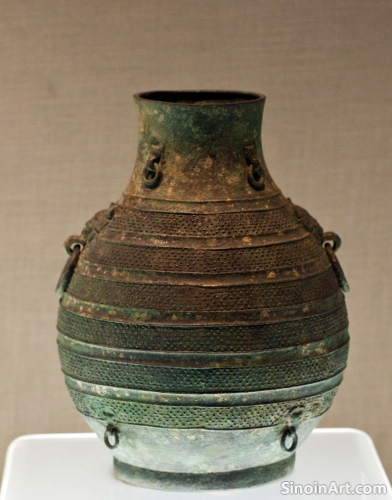Bronze Ware and Ancient Chinese Concepts of the Cosmos: Heaven, Earth, and Humanity
|
Beyond their practical functions, Chinese bronze objects often embodied profound cosmological concepts, reflecting the ancient understanding of the relationship between Heaven, Earth, and humanity. The designs, forms, and even the materials of these artifacts were often imbued with cosmological symbolism and meaning. These objects were often designed to reflect the underlying structure and harmony of the universe.  Many bronze vessels were often decorated with symbols that represented the various elements of the universe, including constellations, celestial bodies, and representations of natural forces. The use of these designs helped to connect the earthly world with the heavenly one. These designs often sought to articulate the relationship between the earthly and celestial realms.  The shape and design of bronze ritual objects were often meant to reflect the proper relationship between Heaven, Earth, and humanity, which were seen as interconnected aspects of a unified cosmic system. The bronze artifacts often served to represent and to solidify these beliefs.  Bronze instruments, such as bells and chimes, were used in ceremonies to create sounds believed to harmonize with the rhythms of the cosmos, helping to create a sense of unity and connectedness. The power of music was used to express a belief in the overall cosmic harmony. The study of bronze objects from a cosmological perspective helps us to further understand the worldview of the ancient Chinese, with its emphasis on the interdependence of all things and the need for balance and harmony. The exploration of these objects opens up a window into the spiritual, philosophical, and scientific beliefs of the time. |
Tag : bronze cosmology, ancient Chinese beliefs, Heaven and Earth, celestial symbolism, cosmic harmony
Related information
- The Challenges of Reconstructing Ancient Bronze Casting Techniques: Experimental Archaeology
- The Art of Bronze Casting: Techniques and Innovations in Ancient China
- Bronze Mirrors as Tools of Divination and Magic in Ancient China
- The Influence of Tang Dynasty Aesthetics on Later Bronze Ware Design
- Bronze Ware and the Development of Chinese Writing: An Intertwined History
This article explores the challenges of reconstructing ancient Chinese bronze casting techniques through experimental archaeology, highlighting the process of recreating tools, materials, and methods, and revealing the skills and challenges faced by ancient bronze workers.
This article explores the art of bronze casting in ancient China, highlighting the development of techniques like piece-mold casting and the lost-wax method, and emphasizing the control of alloys, temperature, and the innovations of ancient metalworkers.
This article explores the use of bronze mirrors as tools of divination and magic in ancient China, highlighting their perceived spiritual powers, their role in rituals and protective practices, and the insights they offer into ancient Chinese beliefs.
This article explores the influence of Tang Dynasty aesthetics on later bronze ware design, highlighting the shift toward more refined forms, delicate decorations, naturalistic motifs, and how these changes reflected a broader change in cultural tastes.
This article explores the intertwined history of bronze ware and the development of Chinese writing, highlighting the earliest forms of writing on bronze, the evolution of script styles, and the role of inscriptions in preserving history and culture.